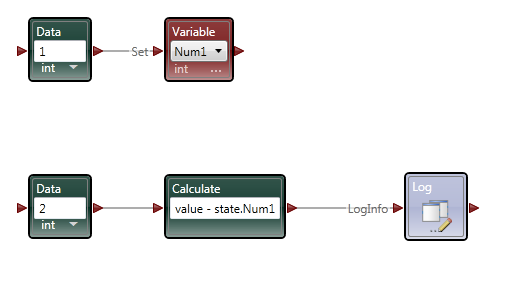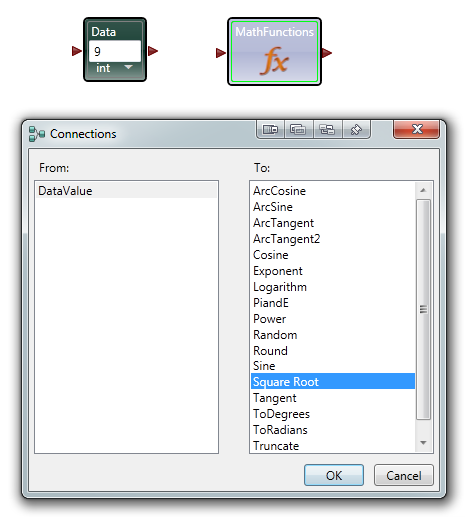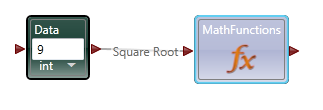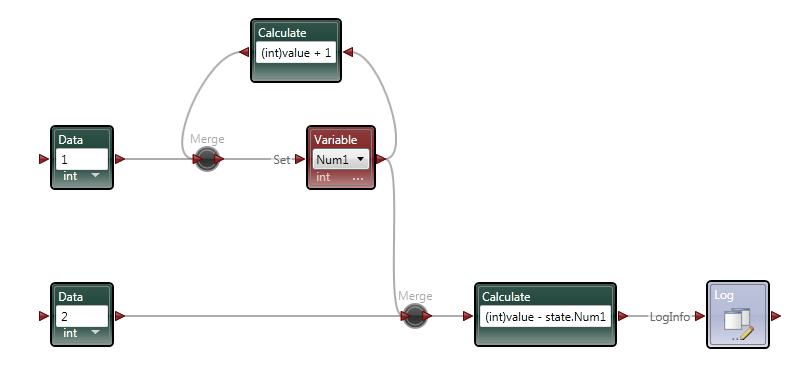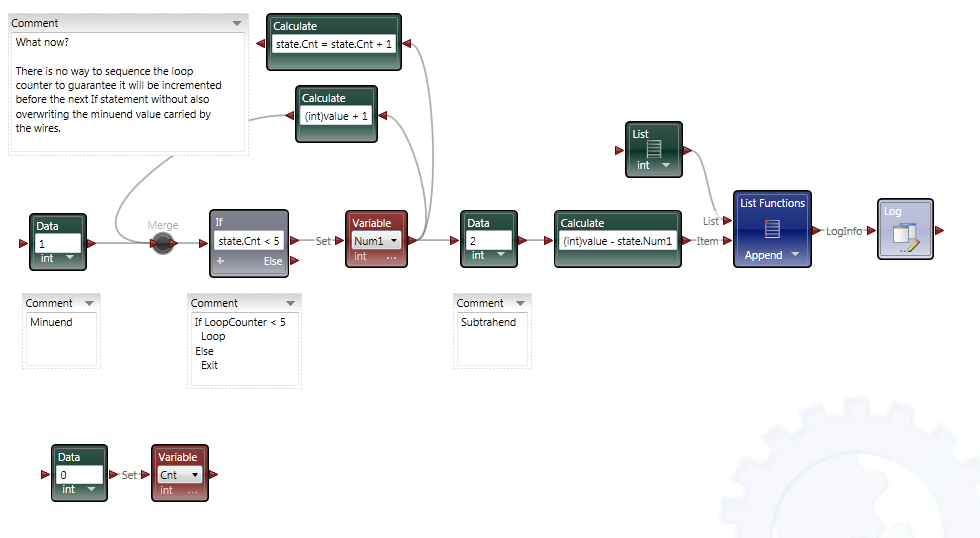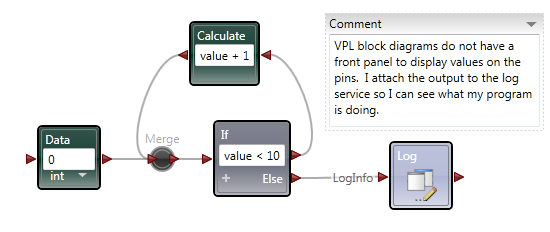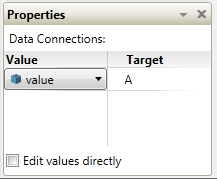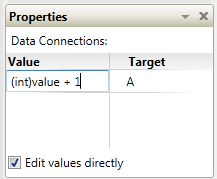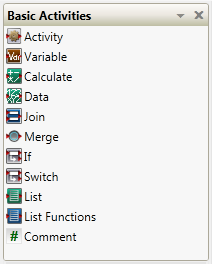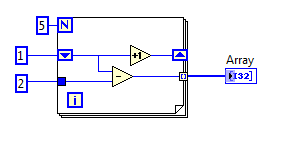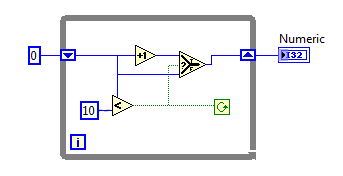Leaderboard
Popular Content
Showing content with the highest reputation on 10/24/2012 in all areas
-
When I have a file that I would prefer not be deleted by the user (templates, default config, etc.) I usually place the contents inside a string constant inside the program and recreate it that way. One fewer file hanging around, and no chance of a user "accidentally" deleting (or modifying) it. Other than that I agree with Neil: Explicitly bundle. Remember they are called "TYPE"-definitions, they are intended to define type and not value. It is tempting, very tempting, in fact very, very tempting to use those constants to hold values. Works great if the TD never changes, but a TD which never changes, well that is really just a plain old constant.1 point
-
So if I understand Stephen correctly one of the things witholding NI from forking the code from LAVAG (amongst others) is the BSD requirement to have the author in the license notes of a binary. I can understand the 'tight coupling' argument by Stephen (NI==LabVIEW). We could create a special version of the BSD that would remove the attribution requirement for binaries. It could be (for instance): This would be a 'Single Clause BSD' (see wikipedia for 2, 3 and 4 clause BSD's), we could even be more specific about where the license should be placed: Visible part of any FP Visible part of any BD In the VI/Class/Library properties I prefer the license in the VI properties, since it allows NI to use BD password protection (or even FP stripping) without breaking the license. EDIT: Now here's a thought/question for lawyers: If I put a license text inside the description of a class, will that cover all the VIs in the class? Shaun would it hurt to use such a '1-clause' license for certain products? Ton1 point
-
Part 2 In the first post I focused the IDE and few things NI might consider implementing in Labview to make our lives easier. In part 2 I’ll compare a few ways VPL code differs from Labview code and illustrate why it seems all wrong to a Labview developer. At the end of part 2 I’ll show why, despite all the apparent flaws in VPL, it actually makes a lot of sense. Show me something simple On the surface VPL and Labview look very similar, but if you try reading a VPL block diagram using Labview’s data flow model, you’ll quickly discover it doesn’t make any sense. In fact, it turns out simple tasks in Labview can be quite hard to accomplish in VPL. Let’s take a look at an incremental looping routine. In pseudocode, I might write something like this: int i = 0 while i < 10 i = i + 1 wend [/CODE] One functionally equivalent G implementation is, We know NI has patented the rectangle, which means other graphical data flow languages need to develop another way to describe the same semantics. A VPL while loop looks like this. [u][i]Hold up. What’s a “Merge” node?[/i][/u] Interpreting the VPL code from a Labview mindset leads us to believe the program is faulty. There is a circular data dependency. It appears we have a deadlock at the Merge node. Looking closer, we can see there are inputs from [i]two[/i] source terminals connected to a [i]single[/i] destination terminal on the Merge node. Labview doesn’t allow that—every destination terminal can have at most a single source terminal. What’s going on here? VPL enforces the same rule of a maximum of one source for each destination pin, [i]except[/i] with the Merge node. The Merge input pin is the one pin that accepts multiple sources. Its function is to simply pass on all the data it receives as soon as it receives it. It seems very peculiar at first, but without the ability to merge multiple data sources into one, loops like this would not be possible. From a certain point of view, Labview’s shift registers do exactly the same thing; they accept the initial value from a source outside the loop, then the same shift register later accepts values from sources inside the loop. The main differences are: 1) Labview’s patented rectangles provide a clear delineation between what is inside the loop and what is outside the loop, and 2) in Labview the wire showing the return path is hidden from users. [u][i]Why does “If” have two output pins?[/i][/u] Here’s a question for you: Looking at the above VPL diagram, how many times does the Log node execute? The ‘If’ node will execute 11 times total (i=0 through 10, inclusive) so according to Labview’s data flow model we expect the Log node to execute 11 times. That would be wrong. Data is sent to the Log node only once, when i=10. This illustrates a key difference in VPL’s handling of data flow with respect to nodes. In LV, [i]none[/i] of the data exits a given node—sub vi, case structure, loop, etc.—until [i]all[/i] of the output nodes have data. That’s not true in VPL. When data becomes available on one output pin, other output pins may or may not also have data available. In the case of the ‘If’ node, the text shows us the conditions under which each output pin will have data. If i < 10, the top pin will have data; otherwise the bottom pin will have data. Last year Steve Chandler started a discussion on LAVA questioning whether or not Lavbiew is a “pure” dataflow language. The conversation touched a bit on the behavior of output terminals on nodes. NI’s approach in Labview makes it much easier to develop and reason about a program. Microsoft’s implementation in VPL is arguably a purer interpretation of dataflow. [u][i]I’ve only seen a handful of nodes. Show me the core functionality.[/i][/u] We are all aware of Labview’s rich set of basic functions. There are so many built-in nodes on more than one occasion I have created my own sub vi to do something only to discover later the same functionality is already included in a native node. By comparison, VPL’s basic functions appear wholly inadequate. There are a total of 11—yes, 11—nodes that define the native operations in VPL. (VPL does have a respectable set of advanced features available from the services palette, but they are not core parts of the language.) Something as simple as subtracting two numbers requires excruciatingly unnatural code. [u][i]What do you mean? Subtracting is hard?[/i][/u] Almost all nodes, including the Calculate node, are restricted to one input pin, so the second number has to be made available to the calculation by other means. In this code I have created a variable named “Num1” and assigned it the value of 1. I’ve also created a data constant with the value of 2 and connected it to the Calculate input pin. The statement inside the Calculate node shows the calculation that will be done. “Value” refers to the value received on the input pin. “State.Num1” refers to the value in the Num1 variable I created. VPL variables are analogous to Labview local variables, except VPL variables are not tied to a front panel control; they are available via the “state” object. Compared to the simple code required to subtract two numbers in Labview, the VPL code almost appears purposely obfuscated. To take it a step further, suppose I want to subtract two numbers multiple times while incrementing the minuend (the number being subtracted from.) In Labview it is easy. I spent about 20 minutes trying to figure out how to do the same thing in VPL. My first implementation doesn’t work. In this code I tried to retrigger the Calculate node by linking the Variable.Set node to the Calculate node’s input pin. The idea is every time the variable is incremented and set the calculation will be performed again. A little thought reveals why this doesn’t work. Since the wires attached to the variable output pin carry the value contained in state.Num1, the calculation will always be equal to zero. After trying a few different things, I’m not sure the code [i]can[/i] be written in VPL without adding a lot of complexity. The diagram below is as close as I could get in the amount of time I was willing to spend on it. The minuend and the loop counter variables are completely independent—there’s no way force both operations to complete before sending the modified minuend on to the next node without overwriting loop counter. [i](Note: While playing around in VPL some more after finishing the writeup, I discovered a way to force the loop counter and minuend to be updated before executing the If node again. I didn't really feel like going back and rewriting this section, but if there's [s]enough[/s] any interest I'll post a block diagram showing the code.)[/i] [u][i]That’s some weird behavior for a sub vi[/i][/u] There are other things an experienced LV user may struggle with when using VPL. We primarily think of nodes in terms of sub vis with each function represented by a different sub vi. Most VPL nodes, especially the advanced nodes, behave more like a polymorphic sub vi. Instead of selecting the function and dropping the correct node, in VPL you drop the node first and select the function to be performed. In VPL the function is chosen via dialog box when attaching a wire. In the diagram below I want to find the square root of 9. When I attach the wire, the dialog box appears asking me to define the math function I want to use. After choosing the function, the diagram shows the nodes connected with the function represented by the pin label. (In part 1 I commented on pin labels being more important in VPL than in Labview. This is why I said that—without the pin label we’d have no way of identifying which function was being performed.) Wires in general play a more active role in VPL than the passive data carriers they are in Labview. Since nearly all VPL nodes are restricted to a single input pin, the wire—not the node—defines which node outputs and node inputs are selected. Sometimes wires also have the ability to directly manipulate data. Selecting the wire shown above and checking the Properties window shows me the default wire behavior. The value put on the wire is being passed on through. The dropdown box also gives me the option to set the value to 0, overwriting the input value. If that doesn’t do enough for me, I can also select the “Edit values directly” checkbox and enter an expression of my own, using the input value or any diagram variables available through the state object. This is definitely an interesting feature; however, on the block diagram wires with custom properties look exactly like wires with default properties, potentially leading to confusing block diagrams if this feature is overused. [u][i]VPL looks practically unusable. Are there any redeeming features besides the IDE?[/i][/u] Throughout these write-ups I’ve used the term “node” to refer to any block diagram element whether it is taken from the Basic Activity palette or the Services palette. In truth they are not the same. Basic Activity nodes are similar to sub vis. They take inputs, do some stuff with it, and return an output. Service nodes are more than that. They run continuously in the background. Depending on the service, it may wait patiently for you to ask it to do something, or it may work independently in the background sending you periodic update messages. If you think this sounds remarkably similar to [i]actors[/i] or [i]active objects[/i], you’d be right. If you try to use VPL to do the same type of low level data manipulation we’re used to doing in Labview, I agree it probably isn’t worth the effort. It is clearly missing all sorts of core functionality needed to be effective at that level. However, I don’t think VPL is intended to be that kind of language. VPL is primarily a message routing language. Its purpose is to explicitly define message flows between concurrent services (i.e. actors) to accomplish a larger goal. All those decisions that look questionable to us make a lot more sense when you think about VPL as a message routing language instead of a dataflow language. Don't get me wrong--it is dataflow, but not in the same sense Labview developers are used to. In fact, the relatively few hours I’ve spent with VPL leads me to believe it is far better at defining and showing interactions between actors than anything we have available in Labview. [u][i]Hey Dave, wrap it up already[/i][/u] With the increased visibility of actor oriented programming within the Labview community, the difficulty in concisely and clearly showing message routes and message sequences between independent actors is certain to become more apparent. Simple message routing can be done in Labview using a mediator—a loop that reads a message and places it on the queue of the actor it is intended for. If the message route requires several hops before getting to its destination the complete route information is no longer contained in one place. Good for modularity, not so good if you’re trying to understand a message’s path through the application. Sometimes actors need to exchange a sequence of messages to do a task. Like multi-hop routes, it is hard to show this sequence concisely in Labview code. The overall sequence must be inferred by digging into individual message handlers and tracing through the code. Clearly presenting multi-hop message routes and message sequences is something I’ve struggled with in my own code. There are no good ways to accurately communicate that information to other developers, and to some extent you just wave your hands and hope they are familiar with actor oriented programming. I started looking into VPL a couple weeks ago mainly to get another perspective on dataflow languages. I expect it to address the same types of issues Labview does. Instead I discovered the relationship between VPL and Labview is an odd mix of contradictions. VPL is not a direct competitor to Labview, but its higher level of abstraction does pose a distinct threat to Labview’s simple concurrency model. It’s not intruding on Labview’s domain in the test and measurement industry (yet,) but it does make it harder for Labview to gain acceptance as a general purpose concurrent programming language. In short, VPL doesn’t [i]replace[/i] Labview, but in some ways it [i]surpasses[/i] Labview. I’m quite curious to see how well VPL scales when there are tens or hundreds of messages between actors. How much clarity does it lose? How easy is it to accidentally break an app? How long will it take to implement? My gut feeling is an experienced .Net developer using C# to create services and connecting them using VPL would spend roughly the same time as an experienced LV developer writing the same application in Labview using actors, but when the code is complete the VPL code will provide a much better high level view of what is happening than the Labview code. A better understanding naturally leads to faster changes and fewer bugs. And in the end, isn’t that what we all want?1 point




